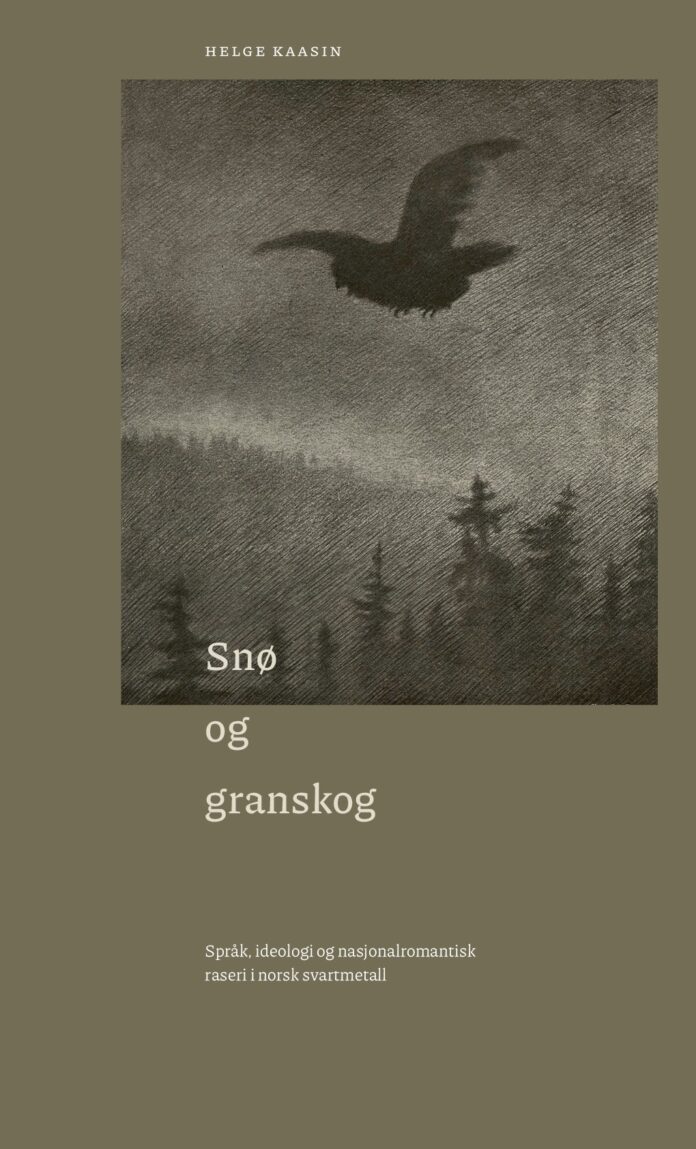Forlag: Nasjonalbiblioteket, Oslo Layout og design: Superultraplus Designstudio AS
(THIS ARTICLE IS MACHINE TRANSLATED by Google from Norwegian)
Helge Kaasin is there Snow and spruce forest provided a powerful contribution to understanding which ingredients black metalthe movement has put in its ideological witch's cauldron – and it has been done in a book that appears with textual and bookish elegance. The background for the release is national Library in Oslo's ongoing exhibition about Norwegian black metal: Bad mood (until 16.9.23). Although most people have a preconceived notion of how black metal sounds and is seen, this release highlights certain features of the genre. A supporting element is the outsiderness of society, but unlike hippies and punks, the black metal people leave the social debate behind – those are the broad lines that are being fought over: the fight against conformity.
The forest
Kaasin claims that the forest is a 'main backdrop', which has been the (Nordic) man's natural habitat before modernity arose in the form of the Christianization of the country. That people are formed by the landscape from which they have grown are thoughts that can be found in Herder's idea of folk spirit. This became fundamental for the romances understanding of national identity, which has been allowed to exist in the forest without enemies. At the same time, the forest – in the 'treasure trove' of the entire globe – is the very place where society's established demands on the individual are avoided. "The night side of society's orderly light", Kaasin calls the darkness of the forest. At Dante Alighieri also begins The divine comedy in the "thick, black forest" and thus as far away from Christianity's heavenly kingdom as it is possible to get. The preaching religion which eventually displaced various pagan customs, including the forests holy places, and referring to one almighty god (universalism) who is located in an abstract heavenly kingdom, greatly changed man's self-understanding. Within black metal, the forest thus becomes a place where you can once again unfold yourself in a natural habitat.
That a word like main scenery is adopted, also provides a reminder of the staging that black metal – or perhaps any movement – initiates. With chalky white make-up, you become someone else. The music researcher Woodrow Steinken has called this 'transformation', which Kaasin understands as central to the crossing of boundaries: with or without instruments. The ultimate border crossing is death self. The perception of what happens after the moment of death depends on belief, but the absence of longing and pain are possibilities, even if the uncertainty is the strongest. It takes courage to look forward to that moment.

"A Coming Golden Age"
“Of this one modernityone we became sick – of the unmeasured peace, of the cowardly compromise, of all the virtuous impurity of the modern Yes and No", wrote Friedrich Nietzsche i Antichrist (1895). The book's review of black metal texts from, among others Mayhem, Solefald and Burzum – in accordance with (parts of) Nietzsche's philosophy – conclude that a modern world without unifying narratives, where myths and mysticism have given way to rational explanations. Political ideologies have played bankrupt. Decay can replaced by "a coming golden age" (millenarianism), which may come after a major cleaning. Then will The new time make room – where man will no longer be subordinate, but free.
Welhaven and the black metal
Kaasin claims that the black metal is building on nationthe construction project's idea of the Norwegian mountain farmer, who lived off and in harmony with nature. At the same time, it is enjoyable reading to see how the classic match between Wergeland and Welhaven in black metal's understanding goes in Welhaven's favour. And that is perhaps not so strange. Wergeland was a socially engaged person whom every May 17 speaker cannot fail to mention, while Welhaven's view of history is experienced as a pointer towards a Nordic reality, filled with vistas – and a blurred dividing line between dream and reality. Kaasin finds the purely textual relationship between Welhaven and black metal expressed in the then 20-year-old Varg Viker's.

Theodor Kittelsen
Welhaven also later appears as a role model for a central artistic figure for the black metal milieu: Theodor The tickle (1857-1914).
Snow and spruce forest is a book which richly deals with literary relations to the black metal movement, but which also to some extent presents the aesthetic expression. A regular feature is the silhouette of the forest.
Theodor Kittelsen is definitely the most used creator of motifs for the music releases within the genre. Especially Kittelsen's The black dew (1900) has had great appeal. In the book, through words and pictures, you get to experience the death of an old culture in our history – which may have had its parallel in the "spiritual plague" that has been a term within black metal. Also Kittelsen's picture series Tirilil-Tove, which is inextricably linked to Welhaven's poems, have been used and become iconic motifs understood within a Norwegian subculture with an impact all over the world.
Significant cultural institutions such as NRK with its four-hour long documentary series Hell, and the National Library, now have this book publication and exhibition Bad mood brought this sometimes unsavory culture up for closer scrutiny and presentation. There is a necessary contribution on the scales in relation to it witch hunt the ferrous metal was exposed to when it was at its worst in the 1990s. Some reflections on the incomprehensible can never be despised.
Se www.nasjonalbiblioteket.no for the exhibition, which runs until 16 September.


